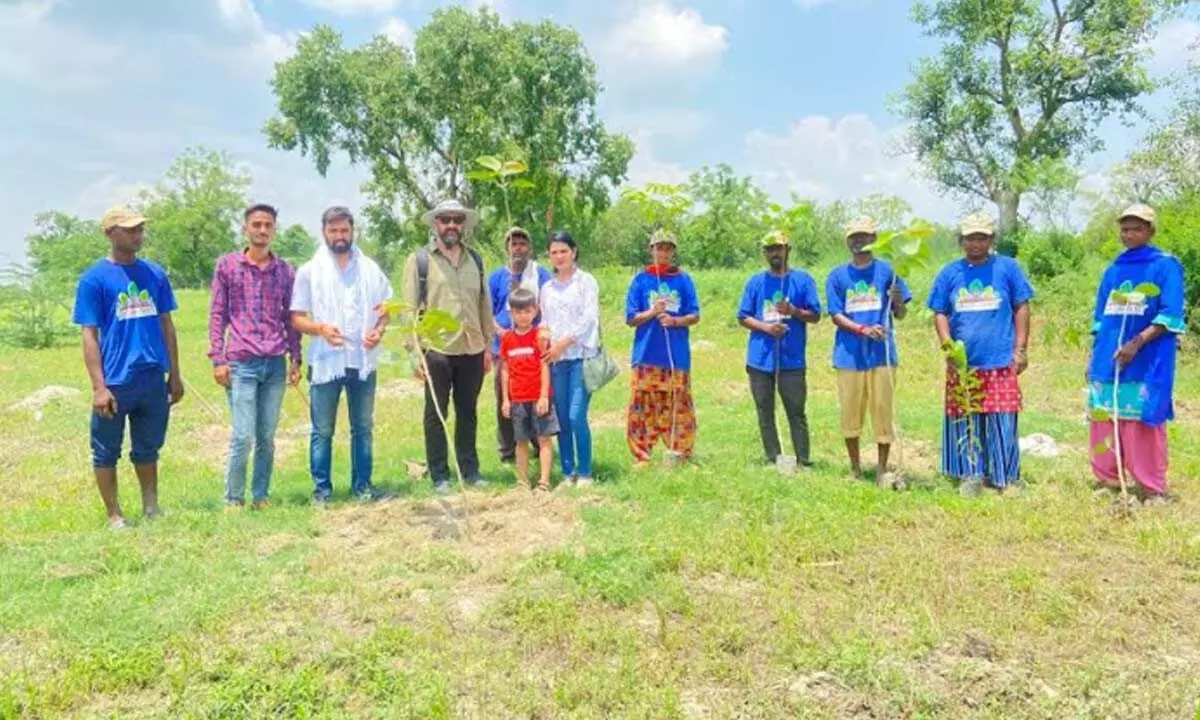Reforestation helps to build sustainable ecology in urban heat islands, says Pradip Shah

The co-founder of Grow-Trees.com discusses how plantation activities can help reduce ambient temperatures of overheated cities
The University Corporation for Atmospheric Research (UCAR) describes an urban heat island as a metropolitan area which is significantly warmer than its surroundings. UCAR attributes this phenomenon to urban development and an increase in average temperature. There is also a clear and obvious link between lack of vegetation and temperature increase. Pradip Shah, the founder of Grow-Trees.com says, In concrete jungles where eco-diversity is scarce, buildings and asphalt roads absorb and trap heat and this causes ambient temperatures to rise. Add to this, a toxic mix of vehicular and industrial pollution as well as fumes from burning fossil fuels and you have a recipe for a heat island on your hands.
It then follows that global warming is exacerbated by overheated cities and says Pradip Shah, To address the issue, the creation of sustainable and eco-diverse urban landscapes is imperative because deforestation creates an imbalance in the distribution of rainfall and creates temperature anomalies. Take the example of Delhi and the National Capital Region where air pollution is extremely high and there are large amounts of CO2, NO2 and particulate matter in the atmosphere. This pollution causes irreversible damage to health, causes respiratory issues and spikes in mortality rates. A greener city is a cleaner and healthier city and this is why Grow-Trees.com has undertaken urban reforestation projects across India.
Their 'Trees for Urban Landscape' project is striving to replenish natural ecosystems in Delhi and Jamshedpur. We aim to plant over 180,000 trees in Delhi at Yudhistir Bridge IT Park, Jheel Park, Smriti Van, Golden Jubilee Garden, CWG Village, Green Belt Yamuna, Art of Living area - Yamuna and the Sanjay Lake in the Delhi-NCR region. These will help to sequester carbon and also enhance ecological balance and avian diversity, says Pradip Shah.
As per official data, a total of 112,169 trees have been cut down in Delhi from 2005 to February 2018, owing to the construction of the Delhi Metro and Rapid Transit System and afforestation will help to also expand the habitat of indigenous wildlife species.
Trees, concludes Pradip Shah, also reduce topsoil erosion, decrease the momentum of storms and down water runoff and help reduce flooding. We are also planting over 12,000 trees in the mini-forests of Jamshedpur in Jharkhand to cover over 10 acres of land. The city is an industrial hub and is prone to poor Air Quality Index (AQI). Urbanisation and massive deforestation activities have caused the loss of substantial greenery. This is causing weather irregularities, rising pollution levels and land degradation. Reforestation in the end is the simplest way to help urban India breathe better.















